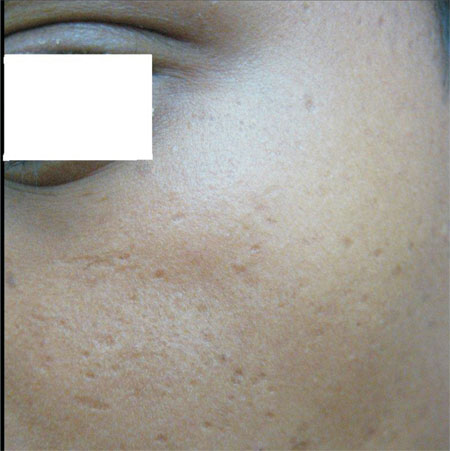A 10-year-old boy presented with multiple
asymptomatic small pit like areas of atrophy present over
the preceding 8 years. There was no history of inflammatory
papules prior to the development of the scars. Family
history was non-contributory. Cutaneous examination revealed
bilaterally symmetrical pitted, atrophic and depressed scars
in a honeycomb pattern. (Fig. 1)
Histopathology showed epidermal atrophy, dilated capillaries
and sclerosis of dermal collagen. A diagnosis of
Atrophoderma vermiculatum was made; topical tretinoin was
prescribed.
 |
|
Fig. 1 Pitted, atrophic and
depressed scars in a honeycomb pattern.
|
Atrophoderma vermiculatum, a disorder
limited to the face usually has its onset during childhood
or puberty and has a slow progressive course. The underlying
pathogenesis appears to be abnormal follicular hyper-keratinization.
It may be associated with congenital heart block,
neurofibromatosis, oligophrenia or Down syndrome. Other
atrophies which simulate this are post-acne scarring
(history of acne, postpubertal onset) and viral varioliform
scarring (history of viral exanthem). Various topical
treatments, including emollients, corticosteroids, tretinoin
and keratolytics, have not shown consistent benefit.

